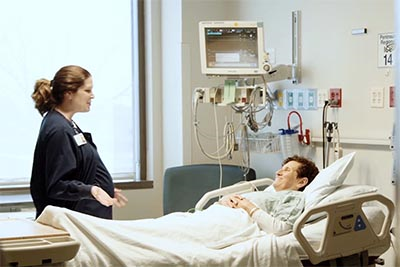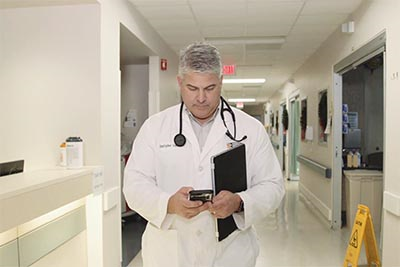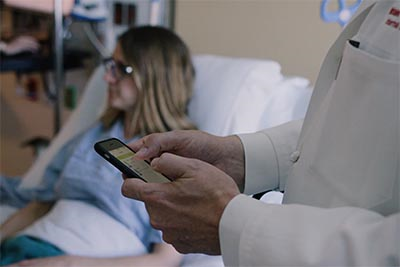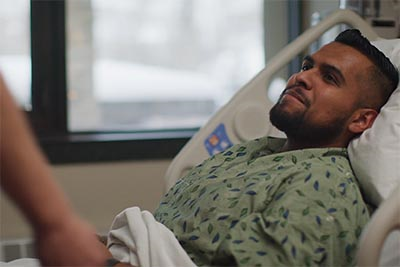Blog
5 Ways to Strengthen the Connection Between Clinical Communication and Patient Safety
 This year, the landmark Institute of Medicine’s patient safety report, “To Err Is Human” turns 20. A “watershed moment for the U.S. healthcare system,” the report elevated the issue of patient safety by reporting that as many as 98,000 people die in hospitals each year as a result of preventable medical errors.
This year, the landmark Institute of Medicine’s patient safety report, “To Err Is Human” turns 20. A “watershed moment for the U.S. healthcare system,” the report elevated the issue of patient safety by reporting that as many as 98,000 people die in hospitals each year as a result of preventable medical errors.
Since 1999, the industry has made important progress in patient safety: Hospitals and health systems achieved an 8 percent reduction in hospital-acquired conditions from 2014 to 2016, saving 8,000 lives and $2.9 billion in costs.
However, preventable harm remains high, and there are many risk areas across the continuum of care that healthcare leaders must continue to target. The ECRI Institute recently released the 2019 edition of its annual “Top 10 Patient Safety Concerns” report, which identifies concerns that may be new risks, existing concerns that are changing, or persistent issues that require focused attention.
There is no panacea for these concerns; however, at the heart of many are communication and workflow issues. Let’s unpack five of the top concerns and explore the role that a clinical communication platform can play in helping improve patient safety.
1. Diagnostic Stewardship and Test Result Management Using EHRs
More than 13 billion medical tests are performed each year in the U.S., which routinely inform patient diagnosis, treatment, and follow-up plans. ECRI notes that hospitals and health systems have begun to rely on the EHR to track results and flag issues, but the communication pathway isn’t always clear. Test result information must be accurate and reported on a timely basis (National Patient Safety Goal 02.03.01), but also must be acknowledged. “Closing the loop” requires clearer communication: Did the ordering physician receive the results? Did she acknowledge their receipt? Did she review and respond to them?
A clinical communication platform automates critical test result notifications: Clinicians can be immediately notified of results from lab or radiology, no matter which mobile device they use. The ordering physician is made aware of findings that require immediate intervention right away, and a full audit trail is logged, which can be used to measure efficiencies, identify bottlenecks in the flow of information, and improve response times.
 2. Burnout and Its Impact on Patient Safety
2. Burnout and Its Impact on Patient Safety
Burnout, ECRI notes, affects everyone—physicians, residents, nurses, allied healthcare providers, and organizational leaders. This year, a new paper deemed the condition a public health crisis: 78 percent of physicians reported that they experience at least some symptoms of professional burnout. While there are many contributing factors to feelings of burnout, intense pressure and overwhelming cognitive load are frequently cited: ECRI explains “Healthcare is evolving rapidly, and keeping up with the changes can be a challenge. Time pressures are intense. Providers are caring for an increasing number of patients with complex medical conditions, drawing on limited resources.”
Technology can’t change the system, but it can help clinicians effectively manage information and reduce some friction and frustration by serving up information that truly matters in that moment without requiring them to alter their existing workflow. A clinical communication platform should be built on a central directory, which serves as a single source of truth for all contact and scheduling details—that means less time spent tracking down colleagues or searching for the right phone numbers. Automated escalations can help eliminate the feeling of needing to respond to every ping in seconds and allow for more time at the bedside by automatically escalating unacknowledged alerts to another caregiver.
3. Detecting and Alerting Changes in a Patient’s Condition
A significant change in a patient’s condition, which can occur in minutes or even seconds, is an ongoing patient safety concern across the continuum of care, according to ECRI. The researchers implore hospitals and health systems to break down silos that can hinder care team communication, and use patient safety huddles and rounding as opportunities to promote information sharing, and they also note technology can help alert caregivers to a patient’s changing condition.
Alarm surveillance technology, a component of the Spok clinical communication platform, correlates and combines valid alarms from a variety of clinical systems, such as nurse call and patient monitoring, and automatically delivers the alert directly to the clinician’s preferred device. This same technology can also suppress nuisance alarms, so caregivers are interrupted less frequently. Finally, this advanced technology can also provide, directly to the clinician’s device of choice, real-time patient data, including live-streaming waveforms, to support quicker, more accurate clinical decision-making about patient conditions.
 4. Early Recognition of Sepsis across the Continuum
4. Early Recognition of Sepsis across the Continuum
Sepsis was the only specific condition to be called out by ECRI, and it’s not hard to see why: Sepsis is a life-threatening condition, with a mortality rate of 6-7 percent that escalates to 50 percent if septic shock sets in. Detecting and responding to sepsis has been a challenge for hospitals since its symptoms are also common in other conditions. ECRI recommends healthcare professionals throughout the continuum be able to recognize sepsis and establish protocols for response.
Clinicians at University of Utah Health undertook people, processes, and technology with their sepsis initiative that ultimately resulted in reducing the mortality rate for septic patients by 20 percent and reducing the length of stay and total direct costs for the hospital by 10 percent. For the technology piece, they tapped Spok to automate the delivery of alerts for a patient showing signs of sepsis according to their vital signs in the EHR. Spok sends that alert as a message to the charge nurse (low risk) or rapid response team (high risk), so they can evaluate that patient and intervene right away.
5 . Standardizing Safety Efforts across Large Health Systems
. Standardizing Safety Efforts across Large Health Systems
ECRI’s final item in its Top 10 list is standardization across large health systems. As mergers and acquisitions (at a record volume in 2018) result in increasingly more nationwide “mega-systems,” ECRI notes an immense need for the right internal structure to address patient safety needs. Continuous communication, clear organizational structure, consistent committee configuration, and universal strategic planning and implementation can help “reduce inconsistencies and embed a strong focus on patient safety.”
This is really the perfect item to conclude with, because this is exactly what a communication platform does: It’s a single system that spans all staff and systems in the enterprise to support seamless information sharing and fluid communication. It can scale based on size—for one hospital or dozens within a system. Unlike the EHR, an enterprise clinical communication platform encompasses all roles (clinical and nonclinical), provides an enterprise-wide directory that all staff can access and update, supports virtually any endpoint device and interoperability with existing hospital systems, and delivers emergency notifications across the enterprise.
How are you keeping patient safety at the forefront at your hospital? I’d love to hear about your initiatives and innovations.




 2. Burnout and Its Impact on Patient Safety
2. Burnout and Its Impact on Patient Safety 4. Early Recognition of Sepsis across the Continuum
4. Early Recognition of Sepsis across the Continuum . Standardizing Safety Efforts across Large Health Systems
. Standardizing Safety Efforts across Large Health Systems

